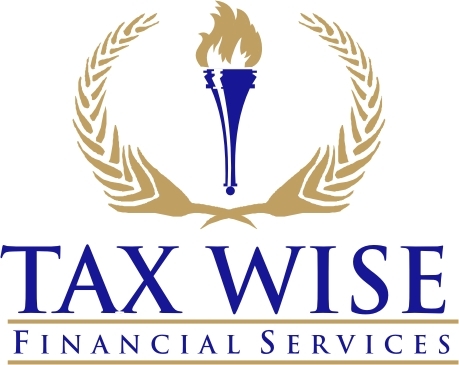
Introduction to Retirement Planning for the Self-Employed
Retirement planning is important for everyone, but it becomes even more crucial when you’re self-employed. Unlike traditional employees, who have employer-sponsored retirement plans like 401(k)s, self-employed individuals must find their own retirement solutions. The good news is that there are several excellent retirement plans designed specifically for self-employed workers in 2025. These plans can help you save for the future while also offering tax advantages. In this article, we’ll dive deep into the best retirement plans for self-employed individuals, explaining how they work, their benefits, and which one might be the best fit for you.
What Are the Best Retirement Plans for Self-Employed in 2025?
When you’re self-employed, choosing the best retirement plan involves understanding your needs and goals. You need a plan that allows you to contribute a good amount of money each year, saves on taxes, and works with your specific income situation. Let’s look at the best retirement plans for self-employed workers in 2025.
1. Solo 401(k): The Top Choice for High Contributions
The Solo 401(k) is one of the best retirement plans for self-employed individuals, especially if you want to make large contributions. This plan is designed for solo business owners or those who run a business with just themselves and their spouse. The Solo 401(k) has two parts: employee contributions and employer contributions.
- Employee Contributions: In 2025, you can contribute up to $22,500 if you’re under 50 years old. If you’re 50 or older, you can contribute an extra $7,500 in “catch-up” contributions, bringing your total to $30,000.
- Employer Contributions: As the employer, you can also contribute up to 25% of your net earnings from your business. This allows for even more contributions. The total combined limit for 2025 is $66,000 (or $73,500 if you’re over 50).
This plan is a great choice if you’re looking to save as much as possible for retirement, and it comes with the added benefit of tax-deferred growth.
2. SEP IRA: Simplified and Flexible
The SEP IRA (Simplified Employee Pension) is another great retirement plan for self-employed individuals. It’s simpler than the Solo 401(k), making it an excellent option for those who prefer something easier to manage.
- Contribution Limits: In 2025, you can contribute up to 25% of your net earnings, or $66,000, whichever is less. This is the same as the Solo 401(k), but without the extra catch-up contributions for those over 50.
- Flexibility: One of the best things about the SEP IRA is its flexibility. You don’t have to contribute every year, which is great if your income fluctuates. It’s a good option for business owners who experience varying income levels.
The SEP IRA also offers tax-deferred growth, but it doesn’t allow for employee contributions like the Solo 401(k). If you prefer simplicity and flexibility, the SEP IRA is a solid option.
3. SIMPLE IRA: A Simple and Low-Cost Option
The SIMPLE IRA (Savings Incentive Match Plan for Employees) is a great choice for self-employed individuals who want a low-cost retirement plan with simple administrative tasks. Unlike the Solo 401(k) or SEP IRA, the SIMPLE IRA is designed for small businesses with fewer than 100 employees, but it can still work for self-employed individuals.
- Contribution Limits: In 2025, you can contribute up to $15,500 if you’re under 50. If you’re 50 or older, you can contribute an additional $3,500 in catch-up contributions, bringing your total to $19,000.
- Employer Contributions: Unlike the SEP IRA, which only allows employer contributions, the SIMPLE IRA requires employers (in this case, yourself) to make contributions. You can choose between a 2% non-elective contribution or a matching contribution of up to 3%.
The SIMPLE IRA is easy to set up and maintain. However, it has lower contribution limits than the Solo 401(k) or SEP IRA, making it less ideal if you want to contribute larger amounts each year.
4. Traditional or Roth IRA: The Classic Individual Options
Traditional and Roth IRAs (Individual Retirement Accounts) are another option for self-employed individuals, though they are generally better suited for smaller contributions compared to other plans like the Solo 401(k) or SEP IRA.
- Contribution Limits: For 2025, you can contribute up to $6,500 to either a Traditional or Roth IRA, or $7,500 if you’re 50 or older. This is much lower than the contribution limits of the Solo 401(k) or SEP IRA.
- Tax Benefits: The main advantage of a Traditional IRA is that contributions are tax-deductible, which can lower your taxable income. The Roth IRA, on the other hand, allows for tax-free withdrawals in retirement, making it a great choice for long-term tax planning.
While both of these options are good for self-employed individuals looking to save for retirement, their contribution limits are much lower, so they may not be the best choice if you’re trying to save large amounts each year.
How to Choose the Best Retirement Plan for Your Self-Employed Situation
Choosing the best retirement plan for yourself in 2025 depends on several factors, including how much you want to contribute, your income levels, and how much flexibility you need. Here’s a simple guide to help you decide:
- Solo 401(k): Best if you want to contribute a large amount each year and are comfortable with managing both employee and employer contributions. This plan is great for individuals with a high income.
- SEP IRA: A great option if you want a simpler, flexible plan that allows for large contributions but doesn’t require employee contributions. Ideal if you have inconsistent income or want to keep things simple.
- SIMPLE IRA: Best for those who want a low-cost plan with simple administration, but are okay with lower contribution limits.
- Traditional/Roth IRA: Best if you’re just starting to save for retirement or want to make smaller contributions. These plans work well if you’re already contributing to other plans but want additional retirement savings.
Conclusion
As a self-employed individual, choosing the best retirement plan for your situation is crucial for building long-term financial security. Whether you choose a Solo 401(k), SEP IRA, SIMPLE IRA, or a traditional or Roth IRA, each of these retirement plans offers unique benefits depending on your needs and goals. By understanding the features, contribution limits, and tax advantages of each plan, you can make an informed decision that will help you save for a comfortable retirement.
Remember, there’s no one-size-fits-all approach. The best retirement plan for self-employed individuals in 2025 depends on your specific financial situation, so take the time to research and consult with a financial advisor to find the plan that works best for you.


